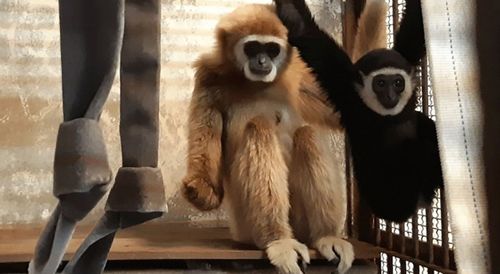Momo, a 12-year-old white-handed gibbon, shocked her keepers at the Kujukushima Zoo and Botanical Garden in Nagasaki in February 2021 when she gave birth despite having no male companionship.
Now two years later, following a DNA test on her baby, the zoo has worked out who the father is – and even has a theory about how the gibbons mated.

Momo, a 12-year-old white-handed gibbon, shocked her keepers at the Kujukushima Zoo and Botanical Garden in Nagasaki in February 2021 when she gave birth despite having no male companionship. (CNN)
The test showed the father to be Itō, a 34-year-old agile gibbon, who was in an adjacent enclosure to Momo around the time she became pregnant.
The zoo told CNN on Friday it believed that Momo and Itō had managed to mate through a small hole in a steel plate between their enclosures. The hole measured about nine millimeters in diameter.
The baby ape – who is yet to be named – now weighs around two kilograms and is “growing healthily” under Momo’s loving attention, the zoo said.
Read Related Also: Rafael Nadal has hip flexor injury, may need 6-8 weeks of rest
“It is a precious life born into the world, we will continue to take good care of him and hope that he will live a healthy long life,” said Hideki Hisano, deputy director of the zoo.
Gibbons are among the smallest apes, but they have loud singing voices that have developed into an elaborate language, and can swing from branch to branch at speeds of up to 50km per hour.

Snow leopard at sunset scoops photography award
There are dozens of gibbon species that are native to parts of Asia, ranging from northeastern India to China and all the way to the Borneo archipelago.
The population of agile gibbons in the wild has been decreasing and they have been listed as an endangered species in the International Union for Conservation of Nature, because their habitat is threatened by human activities such as deforestation, mining and road construction.






